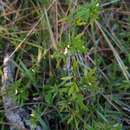Physical Description
provided by USDA PLANTS text
Perennial, Herbs, Taproot p resent, Nodules present, Stems or branches arching, spreading or decumbent, Stems prostrate, trailing, or mat forming, Stems less than 1 m tall, Stems solid, Stems or young twigs glabrous or sparsely glabrate, Leaves alternate, Leaves petiolate, Stipules conspicuous, Stipules green, triangulate to lanceolate or foliaceous, Stipules persistent, Stipules clasping stem at the base, Stipules adnate to petiole, Stipules connate to each other, forming a tuber or sheath, Leaves compound, Leaves pinnately 3-foliolate, Leaves odd pinnate, Leaf or leaflet margins entire, Leaflets opposite, Leaflets 3, Leaves glabrous or nearly so, Leaves hairy on one or both surfaces, Flowers in axillary clusters or few-floweredracemes, 2-6 flowers, Inflorescences spikes or spike-like, Inflorescence axillary, Inflorescence terminal, Bracts conspicuously present, Bracteoles present, Flowers zygomorphic, Calyx 5-lobed, Calyx glabrous, Petals separate, Corolla papilionaceous, Petals clawed, Petals oran ge or yellow, Banner petal ovoid or obovate, Banner petal suborbicular, broadly rounded, Wing petals narrow, oblanceolate to oblong, Wing tips obtuse or rounded, Stamens 9-10, Stamens or anthers dimorphic, alternating large and small, Stamens monadelphous, united below, Filaments glabrous, Style terete, Fruit a loment, jointed, separating into articles, Fruit unilocular, Fruit freely dehiscent, Fruit elongate, straight, Fruit rugose wrinkled or reticulate, Fruit exserted from calyx, Fruit spiny, bur-like, with hooked bristles or prickles, Fruit beaked, Fruit hairy, Fruit 1-seeded, Seeds ovoid to rounded in outline, Seed surface smooth, Seeds olive, brown, or black.
Stylosanthes hamata: Brief Summary
provided by wikipedia EN
Stylosanthes hamata, the Caribbean stylo, is a species of flowering plant in the family Fabaceae. It is native to the islands of the Caribbean, and nearby areas on the mainland; Mexico, Guatemala, Costa Rica, Colombia, and Venezuela, and it has been introduced as a forage crop to Florida, Peru, Brazil, the Gambia, Burkina Faso, Benin, India, Thailand, Hainan, and northern Australia. There are diploid and tetraploid cultivars, with the tetraploids being more drought tolerant and more frequently sown for pasture.
- license
- cc-by-sa-3.0
- copyright
- Wikipedia authors and editors

